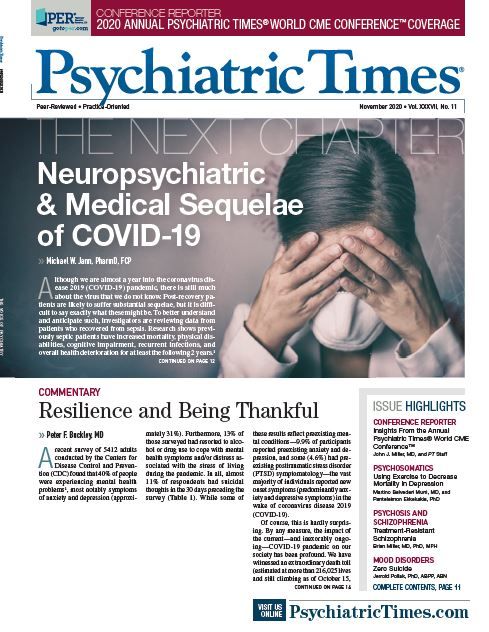Publication
Article
Psychiatric Times
Patients Like Telehealth, But Barriers Still Persist
Author(s):
The COVID-19 pandemic has been a moment of truth for telehealth, and, by most accounts, the technology is rising to the challenge.
Tierney/AdobeStock

FROM THE PAGES OF MEDICAL ECONOMICS
Patients are seeing telehealth as a bright spot in the nation’s response to the coronavirus disease 2019 (COVID-19) pandemic.
According to a news release, patients scored telehealth services at 860 on a 1000 point scale as part of the J.D. Power 2020 U.S. Telehealth Satisfaction Study.
Unfortunately, it was not all good news. The study found that 52% of telehealth users report they have encountered at least 1 barrier to telehealth. The most common barriers included: limited services (24%), technology requirements (17%), and a lack of awareness about the cost (15%). Another 35% of telehealth patients reported they experienced a problem during a visit, and 26% reported technological-audio issues, the release reported.
“The COVID-19 pandemic has been a moment of truth for telehealth, and, by most accounts, the technology is rising to the challenge and delivering a high degree of satisfaction among those who use it,” James Beem, managing director of global healthcare intelligence at J.D. Power, explained in the release. “However, even though the public awareness with Telehealth is higher due to the influence of COVID-19, the barriers for the consumer to engage with the technology has been a consistent theme in our research.”
Patients who were at-risk gave an overall satisfaction score 117 points lower than the scores of those patients who considered themselves to be in excellent health. Healthier patients were also more likely to understand information provided during the visit, to receive clear explanations, to feel that their visits were highly personalized, and obtained a high quality diagnosis, the release reported.
Of the respondents, 46% said their top reason for choosing telehealth was safety compared with only 13% who reported similarly in 2019.
Amwell ranked the highest in satisfaction among direct-to-consumer telehealth providers with a score of 885, while Doctors on Demand came in second with a score of 879. Cigna, meanwhile, ranked highest among health insurers who provided telehealth services with a score of 867, while Kaiser Foundation Health Plan came in second with 867.
Read more: https://bit.ly/3ltrDQn







